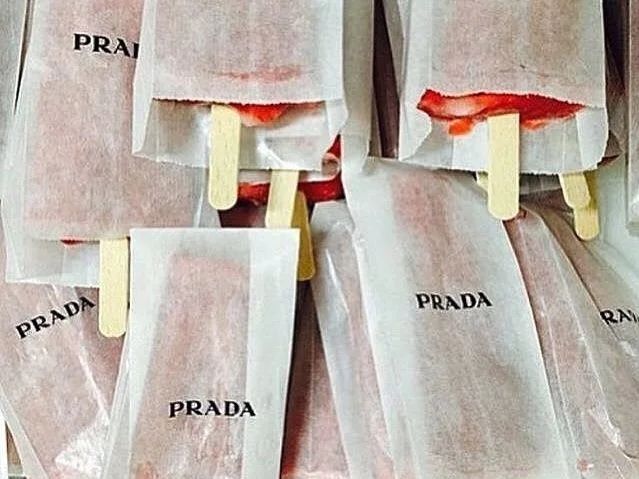Elevating Luxury: Harnessing the Five Pillars of Human Experience
Feature by Havas Media Lux
In today’s turbulent luxury market, meaningful connections, storytelling, and seamless, human-centric experiences have never been more important. We must prioritise rehumanising these interactions by placing the human experience at the forefront of our relationships with brands and technology. Our goal should be to enrich the human condition, rather than detract from it.
Engaging the five human senses—sight, sound, touch, taste, and smell—is crucial. On a biological level, human physiology instinctively links each of the five senses with memories so we can repeat those moments; coupled with psychological incentives, brands have the formula to develop much closer consumer relationships. By doing this, brands can appeal to consumers emotionally and intellectually. Luxury is not just about utility; it encompasses experience, emotion, and perception, so each sense plays a crucial role in creating a multisensory brand identity that enhances perceived value and deepens customer connection.
But how can we do this effectively? In essence, media translates multisensory branding into wide-reaching, emotionally resonant stories that can live across multiple potent platforms.
1. Sight – Creating Visual Appeal
Visually striking packaging, immersive store fits, and artistic collaborations, like Louis Vuitton’s Yayoi Kusama installations, or the hoarding they’re currently using on their new store fit in New York, stimulate desire and signal exclusivity. Striking out-of-home executions, particularly digital OOH, Cinema, AR and VR experiences, are all key in orchestrating visual extravagance, allowing luxury brands to embed themselves in cultural consciousness, using sight not only to attract attention but to craft lasting emotional and aspirational connections with their audience.
Source: Louis Vuitton x Yayoi Kusama, 2024
2. Sound – Crafting Auditory Cues
From ASMR-inspired content to curated soundtracks at runway shows, like Burberry’s first collaborations with emerging musicians, audio enhances mood and storytelling. Immersive cinema utilised by brands such as Gucci for their Cosmos exhibition, podcasts and branded audio experiences, offer intimate, immersive encounters that resonate beyond visuals. Miu Miu’s cinematic “Tales” series, for example, layers narrative voice and sound design to evoke a sensory world. Through carefully crafted auditory touchpoints, luxury brands create atmosphere, build anticipation, and foster a multisensory relationship with consumers, making the brand feel seen and truly heard and felt.
Source: Miu Miu Tales, 2025
3. Touch – Creating Tactile Experiences
Tactile experiences, like Marc Jacobs' pink fur taxis, immerse consumers in physical environments that feel both surreal and indulgent. Mulberry's "Softie" campaign also tapped into touch, transporting consumers into a dreamy world where they tumbled through the clouds before landing on a quilt-like bag. Anya Hindmarch delivered a similar concept with her experiential pop-up "Chubby Clouds", inviting audiences to feel the world for themselves. Rolls-Royce has used high-end magazines with special textured paper and inserts mimicking the feel of their car interiors, such as leather samples and embossed paper. Engaging the sense of touch, luxury brands move beyond mere aesthetics, forging physical connections that enhance perceptions of value, linger in memory, and turn fleeting encounters into lasting emotional impressions. Touch becomes a silent storyteller.
Source: Marc Jacobs London Taxi
4. Taste – Tapping into gastronomic pleasure
Over the past few years, we’ve seen a multitude of luxury brands expanding into hospitality, creating edible extensions of their identity. Flagship cafés like the Anya Hindmarch Café and Ralph Lauren’s coffee shop offer curated menus in branded environments, seamlessly blending fashion with flavour. Anya Hindmarch has used this as an opportunity to have fun, crafting a host of different ice cream flavours which have gone viral across social platforms, and brands such as Miu Miu and Hermès have hosted their own ice cream pop-up trucks. These initiatives foster deeper emotional connections through multisensory experiences - allowing luxury brands to extend their reach beyond just fashion and retail, inviting audiences to explore their world, one carefully crafted bite or sip at a time.
Source: Hermès ice cream truck, 2024
5. Smell – Amplification through signature scents
Scented brand environments, such as those found in flagship stores or experiential installations like the Thierry Mugler olfactory exhibition at Selfridges, immerse consumers in the essence of a brand. Fragrance is a narrative tool that evokes mood, memory, and identity. Some luxury activations even extend scent to unexpected spaces, such as tube or subway station takeovers, to surprise and intrigue consumers. Experiential pop-up events like Prada’s Paradoxe flower stall or Miu Miu’s “Secret Garden” enhance brand recognition through memorable, meaningful moments. By incorporating olfaction into the customer journey, luxury brands create intimate layers of experience that linger long after the visual and tactile elements fade away.
Source: Thierry Mugler at Selfridges
The irony is not lost, that in a world of sensory overload, multi-sensory will play an increasingly significant role in creating stronger connections with consumers. Fostering genuine, human connections will allow brands to build trust and cultivate loyalty.
Tapping into the human sense's cuts through digital noise, creates immediate product trials, and is more often than not unmistakably on-brand. These activations usually have virality built into the campaign. It's a winning strategy for brands and consumers alike.
To find out more about Havas Media Lux get in touch via Hmgukcomms@havasmg.com or via their website havasmedialux.com.






